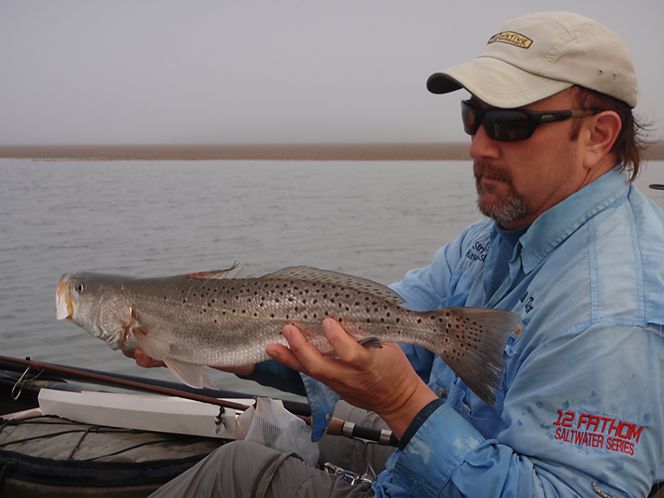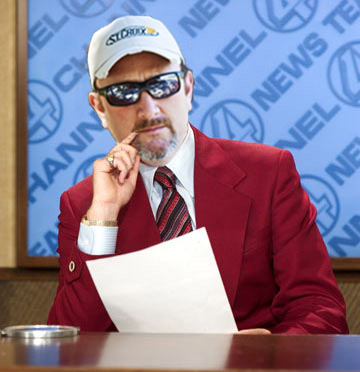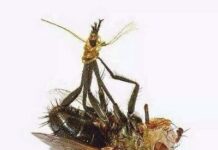Or, “if you lost your anchor, Anchor Man says “Maybe you should have put a float on it!
By Neil Taylor, professional kayak guide/instructor www.strikethreekayakfishing.com
The return to anchoring! The initial piece was generally thorough on anchoring your kayak (“The Anchor Man”.) It sparked some discussion among kayak anglers and other concepts that exist were brought up with some other ideas for the kayak angler to ponder. I am always amazed just how little thought people put into anchoring.
an·chor (ngkr)
n.
1. Nautical A heavy object attached to a vessel by a cable or rope and cast overboard to keep the vessel in place either by its weight or by its flukes, which grip the bottom.
2. A rigid point of support, as for securing a rope.
3. A source of security or stability.
4. Sports
a. An athlete, usually the strongest member of a team, who performs the last stage of a relay race or other competition.
b. The person at the end of a tug-of-war team.
5. An anchorperson.
*(from http://www.thefreedictionary.com/anchor)
( Boo yah! How does my hair look?)
Some people don’t really do it at all. I believe that if you do not have the capability, you are handicapping yourself, one way or another. Honestly, there are plenty of strong reasons to have the ability to “keep your boat in one spot.” Without being overly redundant (but reiterating some important themes) here is Anchor Man Two:
Do you have enough line?
Safety in anchoring is something that is important to review and to know what conditions require certain actions. One such concept is having adequate rope for situations where it is needed. Efficiency in anchoring is another thing that I see “deficient” on a regular basis. Efficiency in fishing can be harmed by deficiencies in efficiency in anchoring.
A great quote by a knowledgeable former Florida captain who has relocated to Maine: “what does it cost, what does it hurt to have enough line to cover an unplanned bad situation?”
It doesn’t cost much at all and it certainly doesn’t take up much space or create any problem. My “extra line” is in my crate and doubles as the “tow rope”, goes mostly unused but it’s there if needed.
For the common guy who may not know but can benefit from the information, the benefit is reducing their odds of becoming a harvested victim of Mother Nature. Which, I guess, is up to the individual but I think I would rather die from something else.
My plan is all-inclusive and comprehensive. With me in particular, my experience, my research and my foresight/hindsight: It’s all methodical and “being in those situations” simply would only be my own error. Odds to odds, situation to situation: Most of what I’m doing, when there are weather situations, the kayaks are probably secured on land (but anchor deployed) and sitting it out in the pre-designated “Safe Area”. It is not a good idea to be in open water in squalls in a 60 pound plastic boat: You must just trust me on this.
Take a knife along to be able to quickly cut a hung up anchor rope. Lots of rocks to hang up on and in a ripping current, you could be in a jam in a hurry. Better yet, don’t attach your rope to the kayak by anything other than a quick-release clip. Those seconds searching for a knife could be costly.
More thoughts on the Anchor Trolley:

Once you’ve had the anchor trolley, you’ll always be glad you do. Trollies on both sides of the kayak are ideal. I still say the only thing that rates as important as an anchor trolley as far is rigging is rod holders. Trollies are a very close second place.
But how about “no trolley?” What other options do you have? They do exist, especially for shorter kayaks. If you go without a trolley you could go with a cleat. To me the cleat is only helpful for controlling the amount of anchor rope you have out. For a single position of a cleat, your boat is limited on where you are going to face for fishing. From the seated position of a kayak, that’s a problem. With a stronger prevailing wind it is a much better situation to have the anchor at the stern of your craft.
There are some variables but you could have a cleat in one location but actually drop the anchor on the other side, having the anchor line going either behind you or over your lap depending on what way you want to face. The cleat is handy for controlling how much anchor rope you are letting out but it is a rigid, fixed point.
So, if you really don’t want to install a trolley there is another option I would recommend above “a cleat”. The float that I attach to my anchor rope has yet another advantage. Shorter kayaks this may actually be an even better option than the trolley system. You clip off your anchor rope to the stern of the kayak. Keep your anchor up with you and when you deploy, it will automatically “anchor to the stern.” Whenever you drop your anchor you will be stern-anchored. When it is time to move what are you going to do? You start reverse thrusting with the paddle. The rope will come up on one side of the kayak or the other with the float on the rope helping to keep the rope high up, close to the surface for easier acquisition. If it is a stiffer wind, you may have to thrust a little more but the float on the anchor rope should help you to access the anchor rope.
But why not just install a trolley? Staying off anchor is ideal if the circumstances allow it- but when you do want to anchor, wouldn’t it be nice to control where you’re facing? Maybe you should consider the Partial-Trolley:
I only use “2/3 trolleys” on my kayaks. The partial trolley, more compact, performs better than the full length trolley.
When to use a drift chute instead of an anchor? Rocky bottom is one situation. But really, anytime you want to continue to stay on the move but want to slow down your drift, the chute is the right tool. My Native Ultimate craft, a chute is not necessary. The design of that craft, it drifts perpendicular to the wind at basically the same speed regardless of wind speed. Other kayaks that have a flatter bottom it is a good idea to take a chute with you.
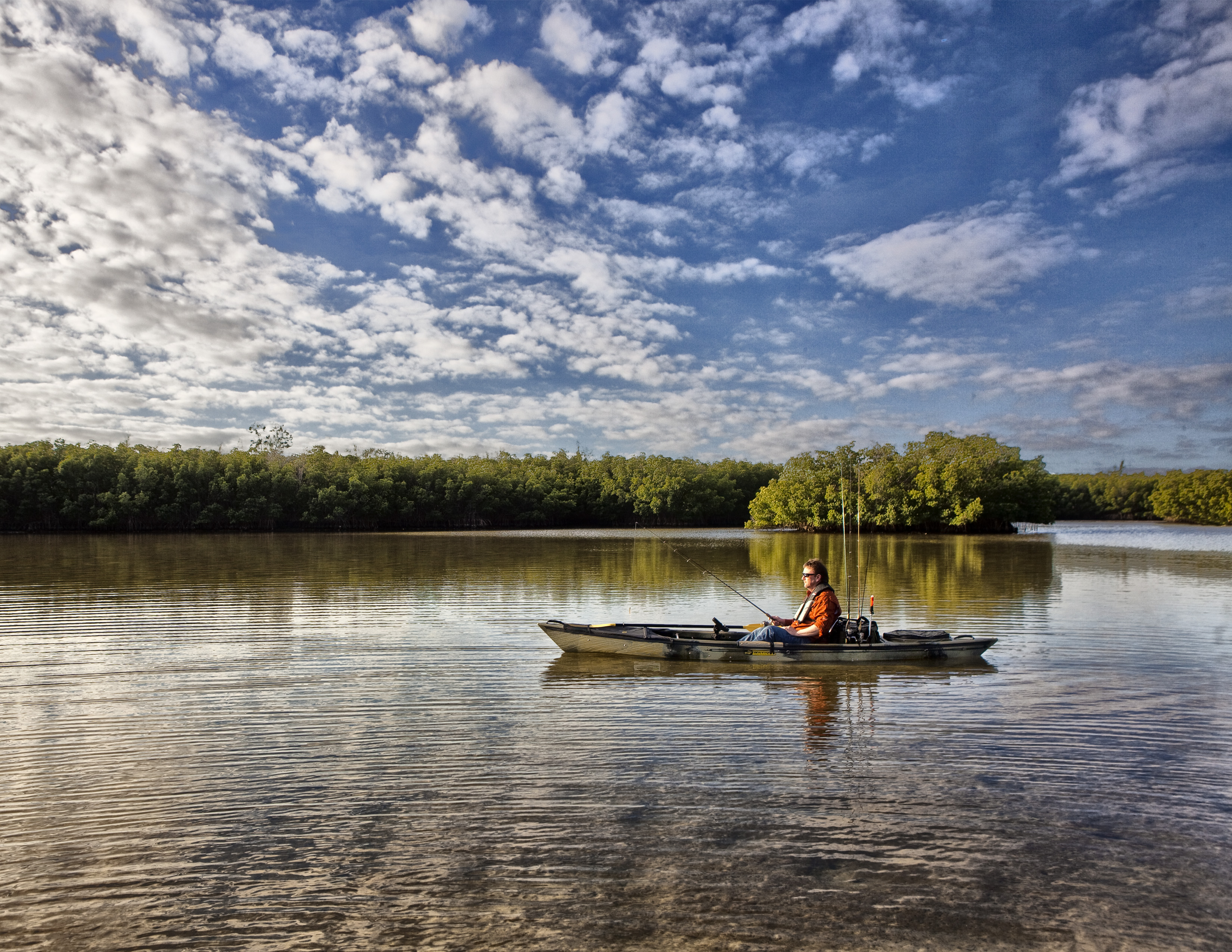
Fishing: A simple philosophy- Stay on the move
Light wind days, stay off anchor UNTIL you hook a fish. Get an anchor down to prevent a fish pulling you through the rest of the school. Have the anchor “ready” equals multiple fish from the same school
You are also covering new water if you stay off anchor.
Maybe you don’t always have to use your anchor: Getting stopped. The reverse paddle “drag” or in the shallows, put the blade down in the mud for “on a dime” stops. If you are on a perfect spot, stake it out. If you are prospecting, keep your anchor in your kayak and don’t deploy until you are into “results.”
Catch my drift
The best kayak anglers achieved their status by moving around, learning waters and locating fish. Most probably utilize the best “direction of drift” decisions to cover a lot of ground “fishing more and paddling less.” A drift has one distinct advantage over staking out a single location: It will eventually take you into areas that hold fish. The proper setup for a drift will take you through a desired area, one that you haven’t already paddled through and more likely to hold undisturbed, feeding gamefish.
“Planning a drift”
Different equations for wind and current will require different positioning to start a drift to work the desired areas.
- Light winds translate to slower drifts through prime areas.
- Situations where the wind and current are moving in opposite directions may create “zero drift” and the angler may have to use their paddle to keep moving into new areas
- With higher winds or the wind/current moving in the same direction: To cover new waters but still maintain a “fishable drift speed”, utilize a drift chute. Too high a drift speed makes it tough to work lures in a realistic manner to get strikes.
One of my biggest Kayak Fishing Skool themes is “Fish more, paddle less” which means utilizing the wind efficiently and setting up the appropriate drift
Note: Positioning a kayak is assisted by a rudder system. Anglers who intend to do a great deal of drift-fishing would benefit from having the rudder. It is a tool, not a necessity, but once you have had a rudder, you will probably always want one.
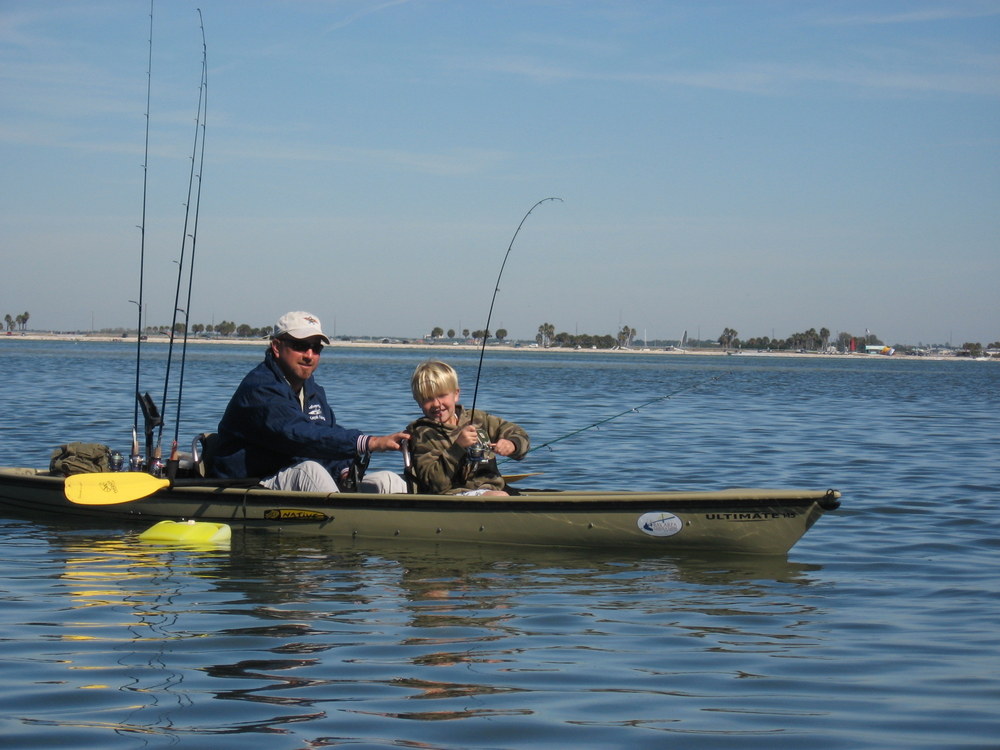
“Reading the water, casting and getting stopped”
For longest casts, keep your back to the wind as much as possible. Staying upwind of feeding fish has many advantages. Long casts downwind translates to “working more water” and better lure presentation with less wind-play on the fishing line that is above water level.
As you drift, stay alert and scan the water for active fish, good bottom features or baitfish being attacked. Determine the direction a predator is facing (or moving) and place the cast accordingly.
Redundancy: Once into feeding fish: The difference between catching a lot of fish and just one comes down to slowing your drift or anchoring. Back at the launch, make part of your setup getting your anchor out and ready, and fastened to the anchor trolley. As needed, with one hand- the angler reaches down, quietly picks up the anchor and lays it over the side. On anchor, any fish you are hooked up to will not be able to drag you through the entire school, leaving more opportunities after that initial catch.
Learn more areas, use controlled drifts, set your anchor at the right times and catch more fish!
Neil Taylor is a kayak fishing guide and comedian, owner of capmel.com, host of the Captain Mel Classic and possibly unstable. If you have seen this man: You are probably near the water.
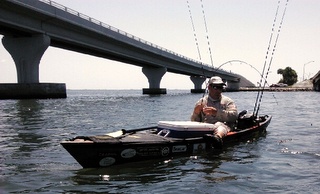
Neil Taylor
Phone: 727-692-6345
Email: livelybaits@aol.com
www.strikethreekayakfishing.com
- The Neil Blog… - July 26, 2023
- The Catfish - July 26, 2023
- update - July 22, 2023
